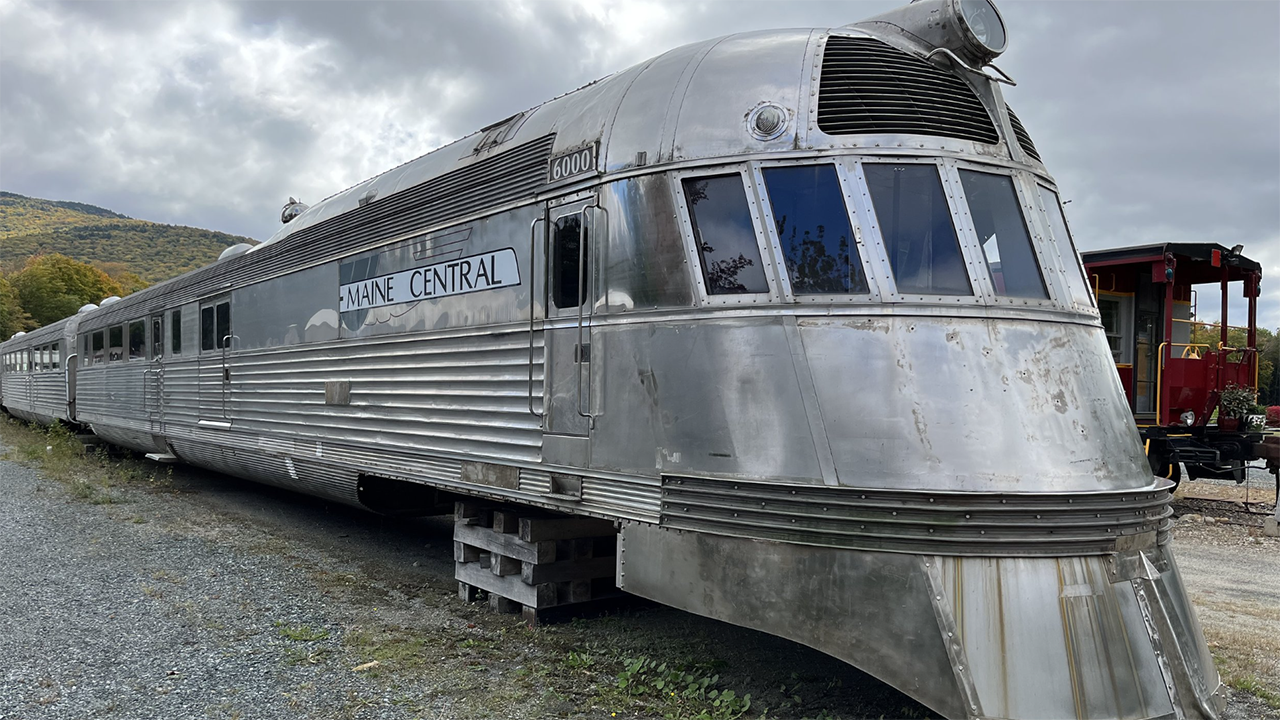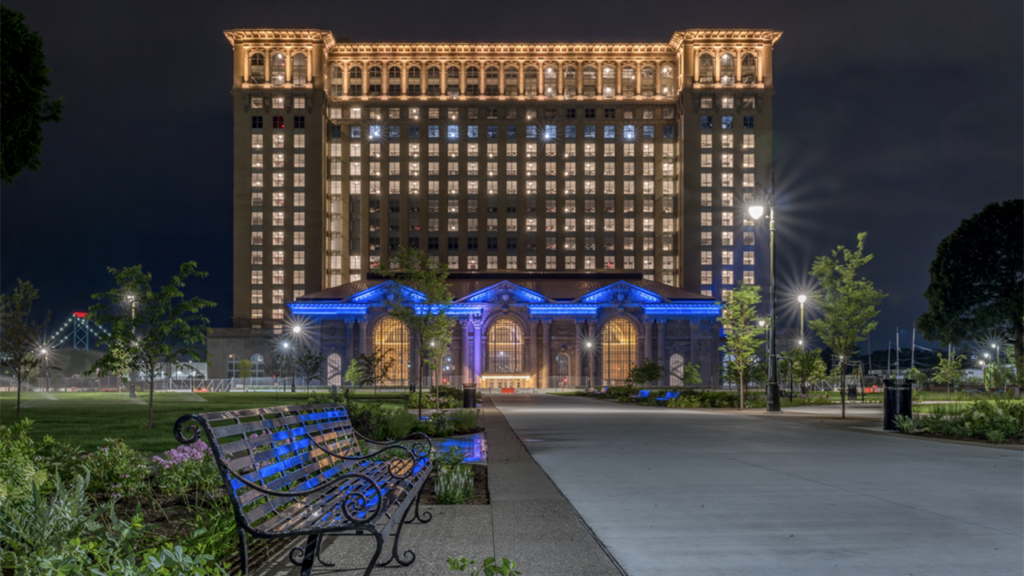
Preservation News: ‘Flying Yankee’ Up for Sale, Michigan Central Station Reopening
Written by Marybeth Luczak, Executive Editor
(New Hampshire Preservation Alliance Photograph)
The New Hampshire Department of Transportation (NHDOT) is reviewing bids for the Flying Yankee, the diesel-electric streamliner built in late 1934 by the Budd Company for the Boston & Maine. Also, Detroit’s historic Michigan Central Station will reopen in June, following a five-plus-year restoration effort by the Ford Motor Company.
Among the bidders for the Flying Yankee is the Nashua, N.H.-based Flying Yankee Association, which was established in 1996 to help the state with fundraising for and restoration of the B&M #6000.
The NHDOT, through early last month, was accepting proposals for the purchase, relocation and “encouraged” restoration of the three-car articulated Flying Yankee, the contemporary of the Burlington’s Zephyr, later renamed the Pioneer Zephyr. The Flying Yankee, located in Lincoln, N.H., was purchased by the state in 1997.
According to a Feb. 18 Concord Monitor report, the department is now reviewing the proposals and “will be posting details and requesting permission from the governor [Chris Sununu] and Executive Council ‘in a few weeks,’ said DOT spokesman Richard Arcand.”
The Flying Yankee Association told the newspaper that its goal is to restore the train and run it rather than putting it in a museum. “We’ll try to use the original parts, as we can,” said Jacob Eidsmoe, Marketing Director for the Flying Yankee Association, according to the Concord Monitor. “‘Some we can’t—it will need new windows, new electrical to meet requirements and codes—but many we can,’ he said. For example ‘the chairs, we want to keep them as close to 1935 look and feel as possible.’” The train, Eidsmoe said, would remain in New Hampshire.
The Flying Yankee was built for the B&M, thanks to a loan from the Public Works Administration, according to the New Hampshire Preservation Alliance. Replacing a conventional steam-powered train with that same name, the Flying Yankee was a significant departure from trains at the time, according to the Flying Yankee Association. “While period-typical passenger cars could weigh 120 tons, the entire three-car trainset weighed only 113 tons and featured the newest technology available at the time,” the association said on its website. “Nearly the entire carbody was constructed from stainless steel, made possible by an innovative construction method called ‘shot welding’ developed by the Budd Company.”
The Flying Yankee carried passengers and freight throughout the Northeast and was maintained at B&M’s South Concord Shops, according to the Concord Monitor. Following 22 years of service and running just over 2.7 million miles, it was retired May 7, 1957. The trainset spent years at the Edaville Railroad museum in Carver, Mass., the paper reported, before moving to the Plymouth and Lincoln Railroad, which is now the Patriot Rail-owned Hobo Railroad. Much of the Flying Yankee’s route is currently operated by Amtrak’s Downeaster.

Meanwhile, Fox 2 on Feb. 20 reported that the historic Michigan Central Station will reopen June 6—though it will no longer be served by intercity passenger trains. Ford Motor Company in 2018 bought the more than 100-year-old building, which was in a state of disrepair, and has been transforming it in phases—from gutting, stabilizing, and winterizing work to replacing the mechanical and electrical systems, restoring the exterior masonry, and restoring and finishing the interior, the media outlet reported.
Michigan Central Station will now feature restaurants, public art, and community gathering spaces, and serve as the centerpiece of the new Michigan Central “mobility innovation district” located in Corktown, Detroit’s oldest neighborhood, according to Ford Motor Company. The district, it said, will be where “mobility innovators and disruptors from around the world will develop, test, and launch new urban transportation solutions.” The 30-acre, walkable district includes 1.2 million square feet of commercial real estate, workspaces for 5,000 workers, maker labs, high-tech connected infrastructure, open spaces, and a state-of-the-art testing environment, according to the company.
Built for the Michigan Central Railroad, the station replaced the original depot in downtown Detroit, which was shuttered after a major fire. It was designed by Warren & Wetmore, architects of New York City’s Grand Central Terminal. It was formally dedicated in 1914, and at its peak in 1940, served more than 4,000 travelers per day and housed more than 3,000 office workers. It remained in operation until the cessation of Amtrak service on Jan. 5, 1988.



